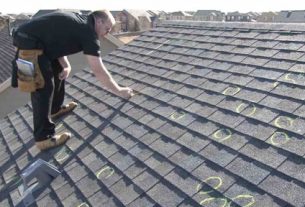Choosing between artificial turf and natural grass for your lawn or sports field is a decision that impacts aesthetics, maintenance, cost, and environmental factors. Each option comes with its own set of advantages and considerations, making it crucial to weigh the pros and cons before making a choice that suits your specific needs.
Environmental Impact
Natural grass has long been favored for its environmental benefits, such as oxygen production, carbon dioxide absorption, and soil erosion prevention. However, the maintenance of natural grass often involves significant water consumption, especially in dry or arid regions. This aspect raises concerns about sustainability and water conservation, particularly in areas facing water restrictions.
On the other hand, artificial turf offers a solution that requires minimal water usage once installed. Companies like Frisco Turf Company specialize in providing high-quality artificial turf solutions that mimic the look and feel of natural grass while reducing water dependency. This option appeals to environmentally conscious individuals seeking to conserve water without compromising on the appearance of their outdoor spaces.
Maintenance Requirements
Maintaining natural grass involves regular mowing, watering, fertilizing, and pest control efforts. These tasks require both time and financial investment, making it a high-maintenance option for homeowners and businesses alike. Additionally, natural grass may require reseeding or sod replacement over time due to wear and tear from foot traffic or adverse weather conditions.
In contrast, artificial turf eliminates the need for mowing, watering, and fertilizing, significantly reducing ongoing maintenance costs and labor. Frisco Turf Company’s synthetic grass solutions are designed to withstand heavy use and adverse weather conditions, providing a durable and low-maintenance alternative to natural grass. This makes it particularly appealing for sports fields, playgrounds, and high-traffic areas where consistent performance is crucial.
Aesthetics and Longevity
One of the primary concerns when choosing between artificial turf and natural grass is the aesthetic appeal and longevity of the surface. Natural grass is valued for its lush green appearance and soft texture, creating a natural habitat for insects and wildlife. However, maintaining this aesthetic requires ongoing care and attention to ensure that the grass remains healthy and vibrant throughout the year.
Artificial turf, offered by companies like Frisco Turf Company, is engineered to replicate the look and feel of natural grass while maintaining its appearance year-round. Advances in synthetic grass technology have resulted in products that are virtually indistinguishable from real grass, providing a consistent and visually appealing surface for residential and commercial applications. Additionally, artificial turf is designed to withstand UV exposure and heavy foot traffic without fading or losing its shape over time, offering long-term durability and aesthetic appeal.
Cost Considerations
The initial cost of installing artificial turf is often higher than that of natural grass due to materials and installation expenses. However, the long-term savings associated with reduced water bills, lower maintenance costs, and enhanced durability can make artificial turf a cost-effective investment over time. Frisco Turf Company offers competitive pricing and professional installation services to ensure that customers receive value for their investment in synthetic grass solutions.
In comparison, natural grass requires ongoing expenses for water, fertilizers, pesticides, and equipment maintenance, which can add up significantly over the years. While the upfront cost of natural grass may be lower initially, the cumulative expenses associated with its maintenance can outweigh the initial savings in the long run.
Conclusion
Choosing between artificial turf and natural grass ultimately depends on your specific preferences, budget, and environmental considerations. Natural grass appeals to those who prioritize environmental benefits and enjoy the traditional look and feel of a natural lawn. In contrast, artificial turf offers a low-maintenance, water-efficient solution that provides year-round beauty and durability.
Whether you opt for the eco-friendly benefits of natural grass or the convenience of artificial turf, companies like Frisco Turf Company are dedicated to providing innovative solutions that meet your landscaping and recreational needs. By weighing the pros and cons of each option, you can make an informed decision that enhances the beauty and functionality of your outdoor space for years to come.





